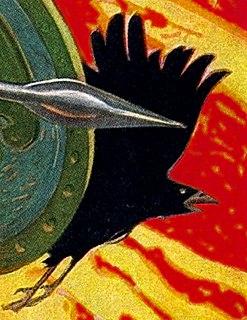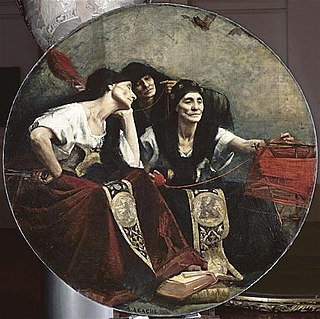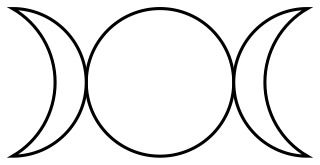 W
WBrigit, Brigid or Bríg is a goddess of pre-Christian Ireland. She appears in Irish mythology as a member of the Tuatha Dé Danann, the daughter of the Dagda and wife of Bres, with whom she had a son named Ruadán.
 W
WIn Greek mythology, a Charis or Grace is one of three or more goddesses of charm, beauty, nature, human creativity, goodwill, and fertility, together known as the Charites or Graces. The usual roster, as given in Hesiod, is Aglaea ("Shining"), Euphrosyne ("Joy"), and Thalia ("Blooming"). Hesiod states that Aglaea is the youngest of this group and the wife of Hephaestus. In Roman mythology they were known as the Gratiae, the "Graces". In some variants, Charis was one of the Charites, who was equated with Aglaea rather than a singular form of the name, as she too is referred to as the wife of Hephaestus.
 W
WThe goddess Chía, is a triple goddess in the religion of the Muisca who inhabited the Altiplano Cundiboyacense in pre-Columbian times. Of central importance to the pantheon, she was worshipped across various Muisca lands.
 W
WIn Aztec mythology, Chicomecōātl [t͡ʃikomeˈkoːaːt͡ɬ] "Seven Serpent", was the Aztec goddess of agriculture during the Middle Culture period. She is sometimes called "goddess of nourishment", a goddess of plenty and the female aspect of maize.
 W
WIn Greek mythology the Horae or Horai or Hours were the goddesses of the seasons and the natural portions of time.
 W
WLes Lavandières, or the Midnight Washerwomen, are three old laundresses in Celtic mythology. Names in various Celtic languages include the kannerezed noz in Brittany and the Bean nighe in Scottish. They can also be found in the Celtic folklore of Iberia as Las Lavanderas in Cantabria, As lavandeiras in Galicia or Les Llavanderes in Asturias. The three old women go to the water's edge at midnight to wash shrouds for those about to die, according to the myth and folklore of Brittany; or to wash the bloodstained clothing of those who are about to die, according to Celtic mythology. The Midnight Washerwomen may be related to the old Celtic tradition of the triple goddess of death and slaughter.
 W
WThe Matres and Matronae were female deities venerated in Northwestern Europe, of whom relics are found dating from the first to the fifth century AD. They are depicted on votive offerings and altars that bear images of goddesses, depicted almost entirely in groups of three, that feature inscriptions and were venerated in regions of Germania, Eastern Gaul, and Northern Italy that were occupied by the Roman army from the first to the fifth century.
 W
WIn ancient Greek religion and mythology, the Moirai, often known in English as the Fates, were the incarnations of destiny; their Roman equivalent was the Parcae, and there are other equivalents in cultures that descend from the Proto-Indo-European culture. Their number became fixed at three: Clotho ("spinner"), Lachesis ("allotter") and Atropos.
 W
WThe Morrígan or Mórrígan, also known as Morrígu, is a figure from Irish mythology. The name is Mór-Ríoghain in Modern Irish, and it has been translated as "great queen" or "phantom queen".
 W
WThe Norns in Norse mythology are female beings who rule the destiny of gods and men. They roughly correspond to other controllers of humans' destiny, such as the Fates, elsewhere in European mythology.
 W
WIn ancient Roman religion and myth, the Parcae were the female personifications of destiny who directed the lives of humans and gods. They are often called the Fates in English, and their Greek equivalent were the Moirai.
 W
WThe Tridevi is a concept in Hinduism joining a triad of eminent goddesses either as a feminine version of the Trimurti or as consorts of a masculine Trimurti, depending on the denomination. This triad is typically personified by the Hindu goddesses Saraswati, Lakshmi, and Parvati. In Shaktism, these triune goddesses are the manifestations of Mula-Prakriti or Adi Parashakti.
 W
WThe Triple Goddess is a deity or deity archetype revered in many Neopagan religious and spiritual traditions. In common Neopagan usage, the Triple Goddess is viewed as a triunity of three distinct aspects or figures united in one being. These three figures are often described as the Maiden, the Mother, and the Crone, each of which symbolizes both a separate stage in the female life cycle and a phase of the Moon, and often rules one of the realms of heavens, earth, and underworld. In various forms of Wicca, her masculine consort is the Horned God.